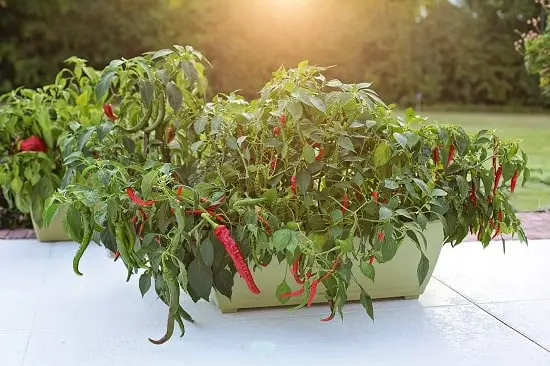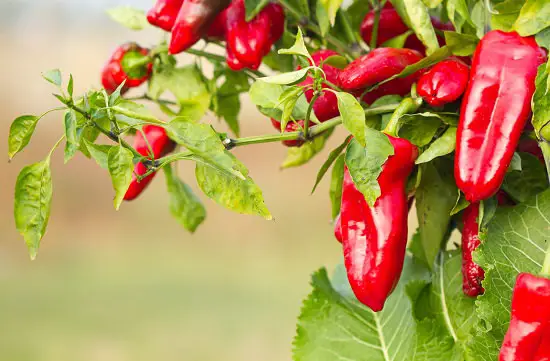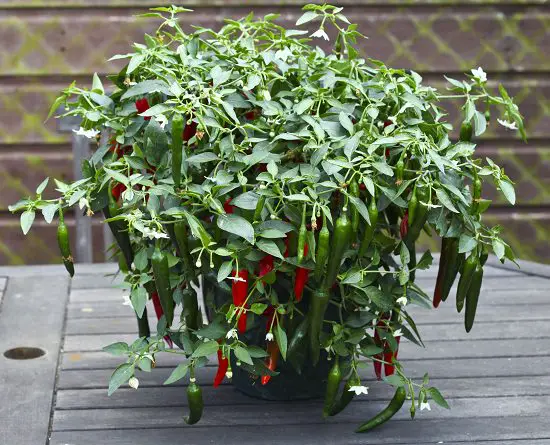Hot-Hotter-Hottest! Want to grow the insanely-spicy, mouth-burning, tongue-firing chili peppers? These 9 tips on How to Make Pepper Plants Hotter will help.

If you want to grow the hottest pepper plants, rule number #1 is to grow them in hot conditions. Apart from that, there are some super easy tricks below, based on the experience of hot chili growers that you should follow.
Put 8 Things in Tomato Planting Hole for Best Tomatoes
#2. Get Hottest Variety
Don’t say you know nothing more than jalapenos when it comes to hot pepper. The Pepper world has some amazing varieties that can bring you to your knees. The hottest peppers are Carolina Reaper, Trinidad Moruga Scorpion, 7 Pot Douglah, and Ghost Pepper (Bhut Jolokia).
Rule number #2 is even simpler–Make sure you buy hot pepper variety seeds to enjoy the heat in your cuisines.
#3. Nitrogen is Important
University of California researchers are trying to grow hotter peppers. They’re experimenting with nitrogen and water levels, and according to them, higher nitrogen levels can increase spicy heat and productivity in peppers. Lower nitrogen levels can increase pungency, too, but this decreases the yield. Read more about this on the official website of the University of California.
#4. Limit Watering
This simple trick really works to grow hotter peppers. However, this doesn’t mean you should keep your plants thirsty–just don’t overwater them. Mostly, gardeners should water when the plant looks a bit droopy. This tip of moderate watering works best when plants begin to set fruits.
#5. Use Epsom salt

Add 1 tablespoon of Epsom salt to a gallon of water and pour it around the base of your pepper plant, following your usual way of watering. Do this in the interval of every 3 to 4 weeks. To learn more about this, don’t miss reading how to use Epsom salt for pepper plants.
#6. Escape from Cross-Pollination

Peppers can cross-pollinate as they are closely related to each other. It means that a hot pepper planted near a mildly hot pepper can cross-pollinate, and the result will be the fruit that is not as hot as desired. Therefore grow different varieties of peppers at a good distance from each other.
#7. Add Sulfur
To make your peppers fiery hot, give them a dose of sulfur in the soil. You can put unlit matches into the hole before planting your pepper plant. Since match heads contain sulfur and are available at cheap rates, they can be used to add extra fire (sulfur) to your peppers. Epsom salt also contains sulfur–if you’re applying it, skip this.
#8. Keep the Peppers Under Stress

Yes! You read it correctly! Stress boosts the amount of capsaicin in the pepper fruit, and you can do this by mistreating the plant by snapping off a few leaves, stems, or fruits. This behavior imitates the harm caused by insects and animals and compels the plant to produce more capsaicin, which is a compound that makes peppers spicy.
#9. Allow Peppers to Age
Just like the wine, the longer a pepper ages, the hotter and spicier it becomes. The amount of capsaicin in the fruit increase with time, as this is the substance that makes pepper spicy and hot. Consequently, wait till the green jalapenos turn red and get your eyes teary while you eat them.
Want to learn more about growing peppers? Click here





Do you have any science to back these claims up?
Cross-pollenation shouldn’t affect the fruit, only the seeds. The NEXT generation is affected, but the peppers themselves follow the mother plant’s template.
Yep, I was thinking the same thing. Next year’s peppers could be affected by cross pollination.
This article is complete bullshit